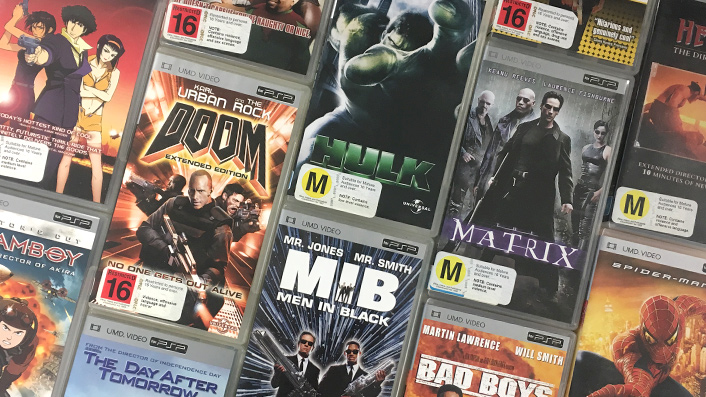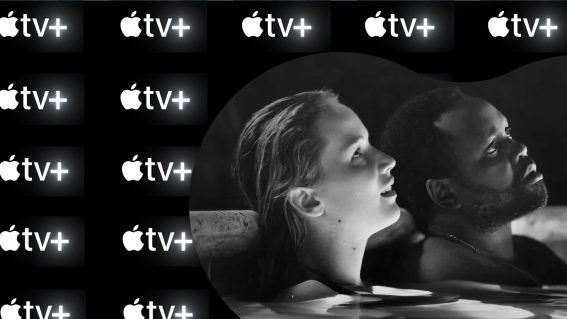How UMDs became the last failed physical movie format
Liam Maguren recounts the brief history of Sony’s UMDs.

Liam Maguren recounts the brief history and his own experiences with UMD movies, Sony’s failed attempt at a physical movie format for its portable device.
UMD. It stands for Universal Media Disc. Ironically, it only works on one device—Sony’s PlayStation Portable—which is part of the reason it joins the likes of Betamax and LaserDisc in the history book of failed physical movie formats. With UHDs still performing moderately well and streaming services becoming the norm for movie distribution, UMDs are almost certain to become the last physical movie format to never take off.
Launching worldwide in 2005, the PSP played games and movies off these rice cracker-sized discs (guarded with a plastic cover) and was rightly compared to a PlayStation 2 that could fit in your pocket (just).
Being able to play DVDs on your PS2 was a big deal back in the year 2000. Around the same time as the PSP’s launch, Sony’s Blu-ray got in a grudge match with HD DVD in the high definition format wars—and won. The PS3’s ability to play Blu-rays gave Sony an edge.
In an audacious attempt to catch lightning in a bottle thrice, Sony pushed UMDs as another must-have physical movie format. But lightning can also ignite bomb fuses.
There was a reason to be interested—excited, even—at the prospect of a pocket-sized media-playing device. No-one had smartphones yet, so being able to watch anything on the bus felt like a giddy novelty. UMDs played at a decent quality too, boasting 720p images scaled down to a screen slightly bigger than a credit card.
Initial UMD movie sales were promising with Resident Evil: Apocalypse and House of Flying Daggers being two of Sony’s highest-selling UMD movies (fascinating to know that a subtitled foreign film could prove so triumphant in this market). Damn well nearly everyone got a copy of Spider-Man 2 on UMD bundled with their PSP console, triggering the temptation to start a mini-movie collection.
The same couldn’t be said about the short-lived UMD music compilations like the Outkast collection (which I proudly own) and The Offspring’s greatest hits (which I shamefully own). Certain regions offered TV series on UMD (well-suited for a 25-minute commute by train) as well as adult movies (which I’m sure benefitted somebody).
The PSP could also play video files, though there wasn’t much it could hold on the feeble 32mb memory stick that came with the console. I had to make do with a few downloaded YouTube clips and merciless rewatches of the Stimutax episode from Sealab 2021 (it’s a masterpiece).
My personal experiences are telling, though. Despite having a small UMD movie collection that’s tragically typical of a teenage boy from the mid-2000s, I almost always came back to watch the short-burst clips I grabbed from the internet.

My embarrassing UMD movie collection.
When it came to the importance of portable viewing, Sony was definitely onto something. Speaking from my own habits however, feature-length material wasn’t a priority for me. Unfortunately, Sony made it the priority with UMDs, unaware of how consumers would eventually watch media on upcoming handheld devices.
More importantly, iPods and MP3 players got people comfortable with the idea of having thousands of songs stored and available on one device. In comparison, lugging a number of cracker-discs everywhere to access your content felt archaic and went against the PSP’s sense of portability.
Worse still, UMD movies were often priced the same as their DVD counterparts. It made little sense to shell out the same money for a smaller movie that couldn’t even work on a television.
A year after release, it was apparent that UMD movies weren’t gonna make it. Big players Paramount jumped ship and so did Universal, with one exec stating: “It’s awful. Sales are near zilch. It’s another Sony bomb—like Blu-ray.” They were, for the most part, correct.
UMD movies would clog up the shelves next to well-selling PSP games with the distant hope that grandpa might mistakenly grab a copy of Doom (the movie, not the game) for 16-year-old Timothy in time for Christmas.
Eventually, users could play their UMDs on their TVs with the 2008 release of the PSP-3000 model—albeit through a basic video-out cable. However, this new-and-improved model arrived a year too late.
In 2007, Apple released the iPhone.























